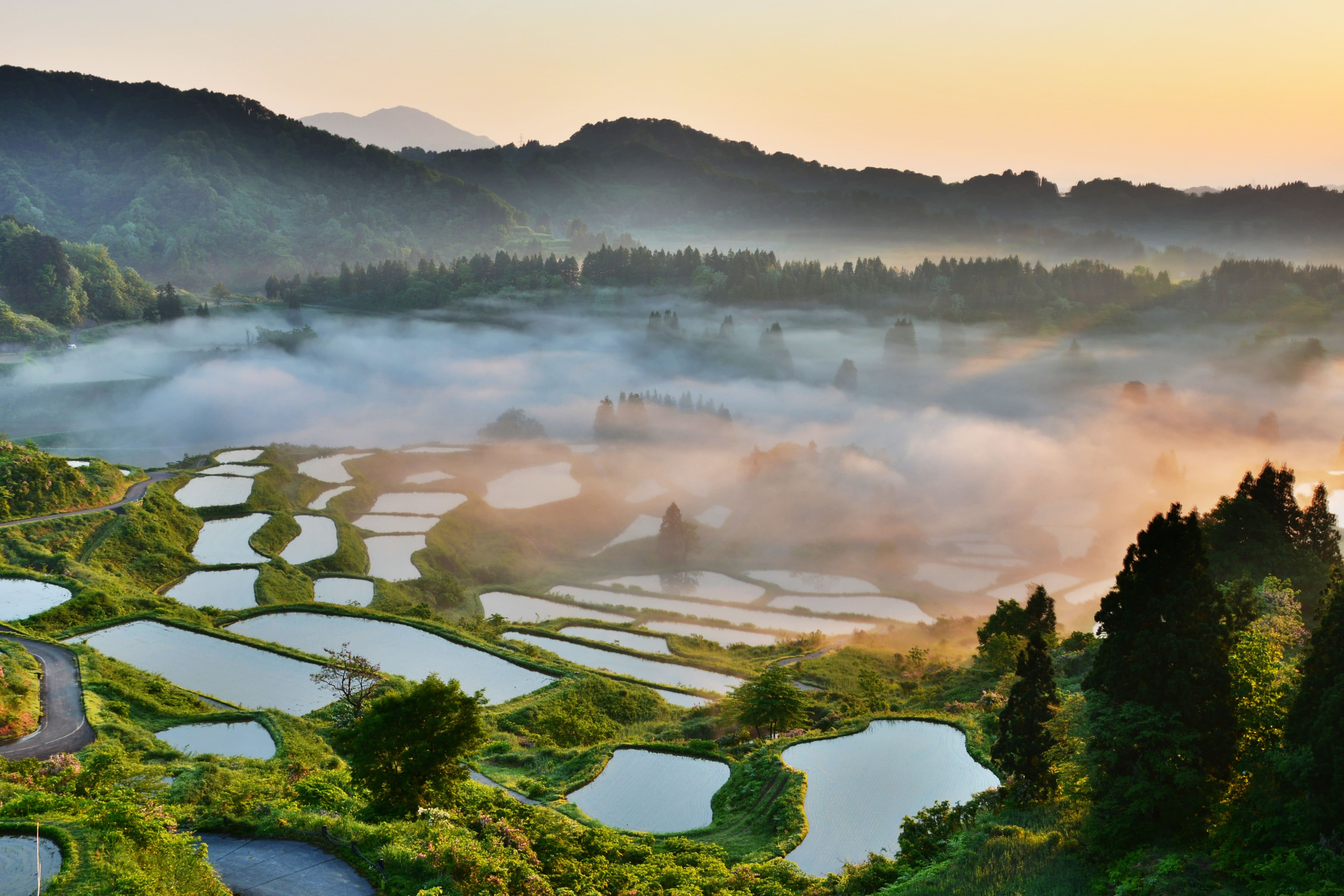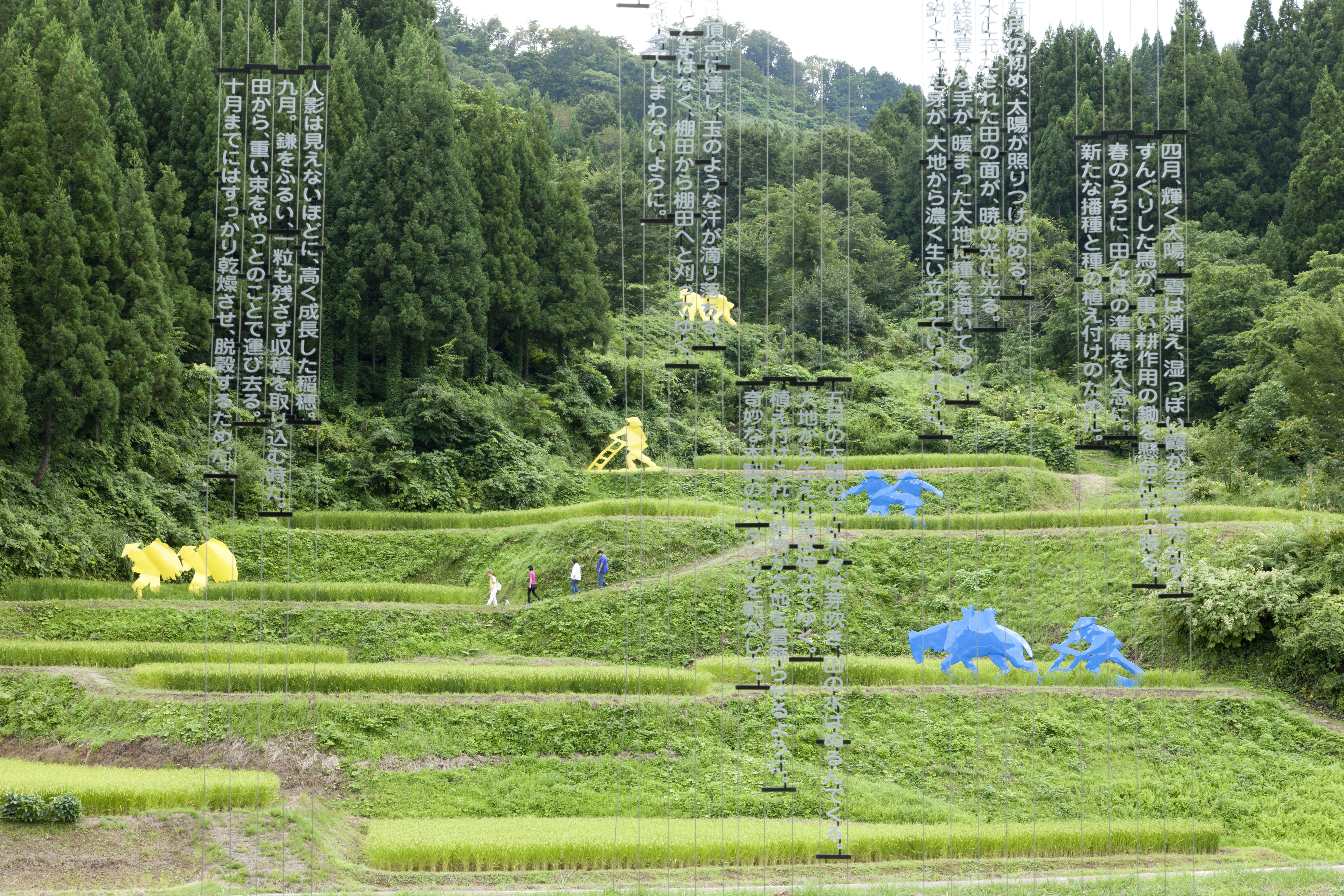About the Echigo-Tsumari Art Triennale

Hoshitoge Rice Terraces in Matsudai
Photo: Tokamachi Tourist Association
The Echigo-Tsumari Art Triennale (ETAT) is one of the largest art festivals in the world as well as the pioneer of regional art festivals taking place across Japan. It has provided an alternative way to explore satoyama following artworks as guiding lights which has received great attention both within and outside Japan as a leading practice of community building by art.
Where does it take place?
The festival takes place in the Echigo-Tsumari region in Niigata, one of the regions in Japan known for heavy snowfall in winter where ageing and depopulation are rapidly advancing. The region is still filled with satoyama life where people engage with land through agriculture and artworks are installed in nature throughout the year.
When does it take place?
The festival has been held since 2000 and has brought with it positive effects to the local economy as well as actively contributing to employment and tourism.
The Echigo-Tsumari Art Field
The satoyama landscape of the Echigo-Tsumari region and its artwork is known as the “Echigo-Tsumari Art Field.” These artworks and the power they hold are viewed as a starting point for regional development, with activities and events being held throughout the year.
This expansive project allows for the discovery of local resources, the study of regional information, community outreach, breathing life into empty, unused spaces, and much much more.
No matter the season or time of year, visitors can experience an ever-changing Art Field whenever they like.
ETAT Concept

“The Rice Fields” by Ilya & Emilia Kabakov
Human beings are part of nature
The Echigo-Tsumari region has been cultivating its land for rice production under the harsh conditions imposed on by heavy snowfall since the Jomon era. Local people here have been exploring how to engage with the inseparable relationship between human beings and nature while managing the tight-knitted communities. This is the origin of the concept “human beings are part of nature”, which has become the overarching concept for every program. Regional development in the Echigo-Tsumari region is advanced with the aim to present a model for how people can relate to nature.